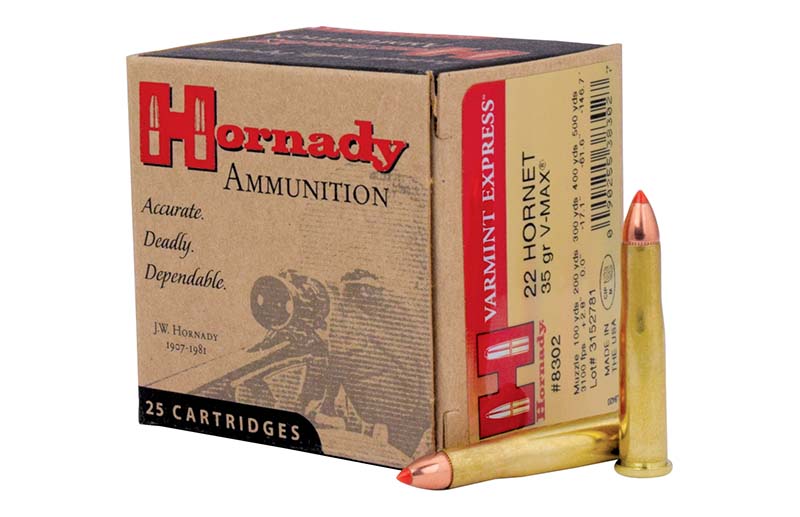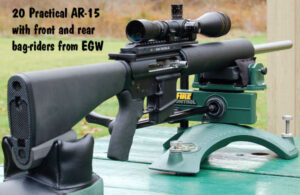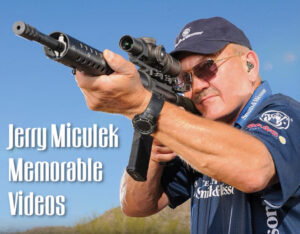Is.22 Hornet a dead cartridge? Is it still stingy? The.22 Hornet small game rifle cartridge is an older and less popular choice. It’s slowly moving towards a slow death. It has managed to survive in a niche, and it’s doing so for a very good reason. It was originally designed to be a varmint cartridge. However, it excels in small-game shooting and other sporting applications. Its strengths include its ability to shoot larger games than you might expect, almost no recoil, and impressive accuracy. These qualities are not enough to make the.22 Hornet a top-seller in today’s competitive marketplace. What should you know about the.22 Hornet Let’s get started… From left to right: the.22 Hornet,.22 Long Rifle and.22 Magnum. Photo from Wikipedia. What is the.22 Hornet? The roots of the.22 Hornet lie in.22 Harwood Hornet. This black powder wildcat cartridge was invented by Reuben Harwood, a late 19th century gun writer. Harwood lowered.25-20 to.22 caliber. This lineage, a rimmed case with tapered neck, is still very visible. Townsend Whelen, and G.L. In the 1920s, Townsend Whelen and G.L. Wotkyns started hot-rodding a.22 Winchester Centerfire at Springfield Armory. Their experimental cartridge was extremely fast for a small powder load, had very little recoil and excellent accuracy potential. Winchester loved the idea so much that it created a new centerfire rifle casing and began cataloguing the cartridge in 1930 (and naming it.22 Hornet in honor of Harwood). The first commercial rifles were released in 1932. It was immediately loved by target shooters and varmint hunters, as well as small game hunters. However, it was quickly found to be almost ineffective against larger game. The US Army and Air Force noticed and issued a number survival rifles, such as the M4, M6 or AR-5/M1, that were chambered in.22 Hornet. They also came with soft-points of 35-grain ball and 45-grain for hunting small game. To ensure compliance with the Hague Convention, the boxes were labeled. An old box of Winchester.22 Hornet soft point rounds. Photo: Wikipedia. It is still used in Australia and Europe as a small game cartridge or target cartridge. It is used in sporting shooting, but not in large numbers. .22 Hornet Ballistics: Practical Range And TrajectoryConventionally, the best range for .22 Hornet is roughly 150 yards and in, but it could be taken out to 300 yards with the right load…and possibly a bit further with handloading. You can load any.224-caliber projectile, but the most common factory options are 35- and 45 grain loads. A 35-grain.22 Hornet’s factory velocity is approximately 3,000 feet per second and requires around 730 foot-pounds energy from a 24-inch barrel. This table shows the trajectory table for Remington’s Premier AccuTip 35 grain loading. All tables were created using ShootersCalculator. They had a 100-yard zero, 1.5-inch sight height, a 10mph 90-degree crosswind, and zero corrections to atmosphere. AccuTip’s specifications (G1.109, velocity 3,100 fps, velocity of 3,100fps) are representative for most 35-grain loads. It loses velocity quickly, as you can see. It would be possible to handload a Hornady 55 grain projectile (G1 BC.243) to 2,650 fps. This handload would also be capable of dispatching coyotes up to 300 yards. It would also be suitable for small-bodied whitetails and other smaller game animals at moderate ranges, provided one uses a soft-point bullet instead of an FMJ. The sad truth about.22 Hornet’s performance is that it lacks optimization. But it’s also possible to do it with minimal effort. Why bother when.223 Remington rifles can be purchased for a fraction of the cost and are more readily available? What is the.22 Hornet good for? According to most factory load data, the.22 Hornet can be used for deer at short ranges (within 100 yards), but it is better and more affordable than.223 Remington. It is best used as a small-game and pest cartridge for squirrels (arboreal, terrestrial), coyotes and prairie dogs, rabbits, and other pests (or small edible critters) almost anywhere, except in the open spaces of the western US. .22 Hornet Wildcats -.22 KHornet and.22 Ackley Hornet There have been a few wildcats that use.22 Hornet as their parent case over the years. Lysle Kilbourn developed.22 K-Hornet and.22 Ackley Improved Hornet. Both of these wildcats blow out their shoulders to hold more powder. The.22 K-Hornet, and the.22 Ackley Improving Hornet provide (roughly 200 fps) more velocity, which isn’t too bad and does modestly increase the effective range of the.22 Hornet. The conversion is easy as you only need to ream the chamber. But ammunition is the problem. It is difficult to get.22 Hornet factory ammunition. The.22 K-Hornet or.22 Ackley Improved Hornet are only for handloading and factory brass is not very common. These chamberings are well-known for having longer-lasting brass than other wildcats. Is the.22 Hornet obsolete? Its days are over, to be honest. It occupies a niche so small that there aren’t many new production guns for it and very little ammunition for it. It is primarily a cartridge that is still being shot by people who have.22 Hornet firearms. This is not something most people are looking for. Handloading is the best way to get the most out of it. But, again,.223 Remington does all it does, does it better and costs less. The fact is that.223/5.56 has more recoil..22 Hornet produces less recoil than.22 Hornet, but.223 produces approximately 4 foot-pounds per rifle of the same weight. There are not many people who can handle 4 foot-pounds recoil. A now-discontinued Taurus Raging Hornet revolver that is chambered for the.22 Hornet. Photo: Wikipedia. What is even more concerning than the recoil is the availability of.22 Hornet ammunition and arms. It is virtually impossible to find new-production firearms that are chambered for it. You will most likely have to look at the used market to find one. The few retailers that do have some are likely to have limited stock and a small selection of models. Most firearms made for the cartridge are hunting-style or survival weapons, but there are a few revolvers that have been modified for it. AmmoSeek currently has just one page of results for the.22 Hornet cartridge. Of those listings, there are only four load options between the different retailers. Although.22 Hornet ammo availability is limited, it is still readily available. If you have a firearm that can chamber.22 Hornet ammo, which is a good thing, the 6 Best.22 Hornet loads Winchester Super-X 46-Grain JHP Winchester Super-X offers a relatively affordable varmint or predator round. It’s also the most readily available factory load. The 45-grain soft-point load from S&B is one of the best.22 Hornet loads. S&B also offers a 45 grain ball load, however it is more expensive. This is the best range ammo available. Bullet Weight: 45 grains. Projectile Type: Jacketed soft point Muzzle Velocity. 2,346 feet per second Muzzle Energy. 550 foot-poundsG1BC: 0.138 MSRP. $25 for 20 Hornady Varmint Express35-Grain V.Max. This high-velocity load is ideal for prairie dogs and small critters. It can be hit hard enough to knock them down to 300 yards. It is also one of the most widely available at the time. Bullet Weight: 45 grains. Projectile Type: Jacketed soft-point Muzzle Velocity. 2,346 fps Muzzle Energie: 747 feet G1 BC. 0.109 MSRP. $30 to $50 per box. 45-Grain Soft Point. Prvi Partizan’s 45 grain soft-point load is almost identical in performance to S&B’s but comes in 50 boxes instead of 20. Bullet weight: 45 grains. Projectile type: Jacketed soft point Muzzle Velocity is 2,427 fps Muzzle energy: 589 foot pounds G1 BC. Unpublished MSRP: $40 for 50 Federal Premium Green Hollow Point 30-Grain Speer. This projectile has a thin copper jacket around the core and is ideal for hunting ammo that is lead-free. Bullet weight: 30 grams Projectile type: Lead free copper-jacketed hollow-point Muzzle velocity is 3,150 fps Muzzle Energy: 661 feet-pounds G1 BC. 0.091 MSRP. $75 per 50 Federal Premium Green Hollow Point 30-Grain Speer TNT. If you are looking for a.22 Hornet load that has longer legs, the Nosler Custom 40 grain BT load is the best choice. It is however expensive and difficult to find so it is not the best choice for everyday shooting. Target grids and bullseye sizes can be downloaded in MOA. This is a great option for long-range shooting. Enter your email address below.

















